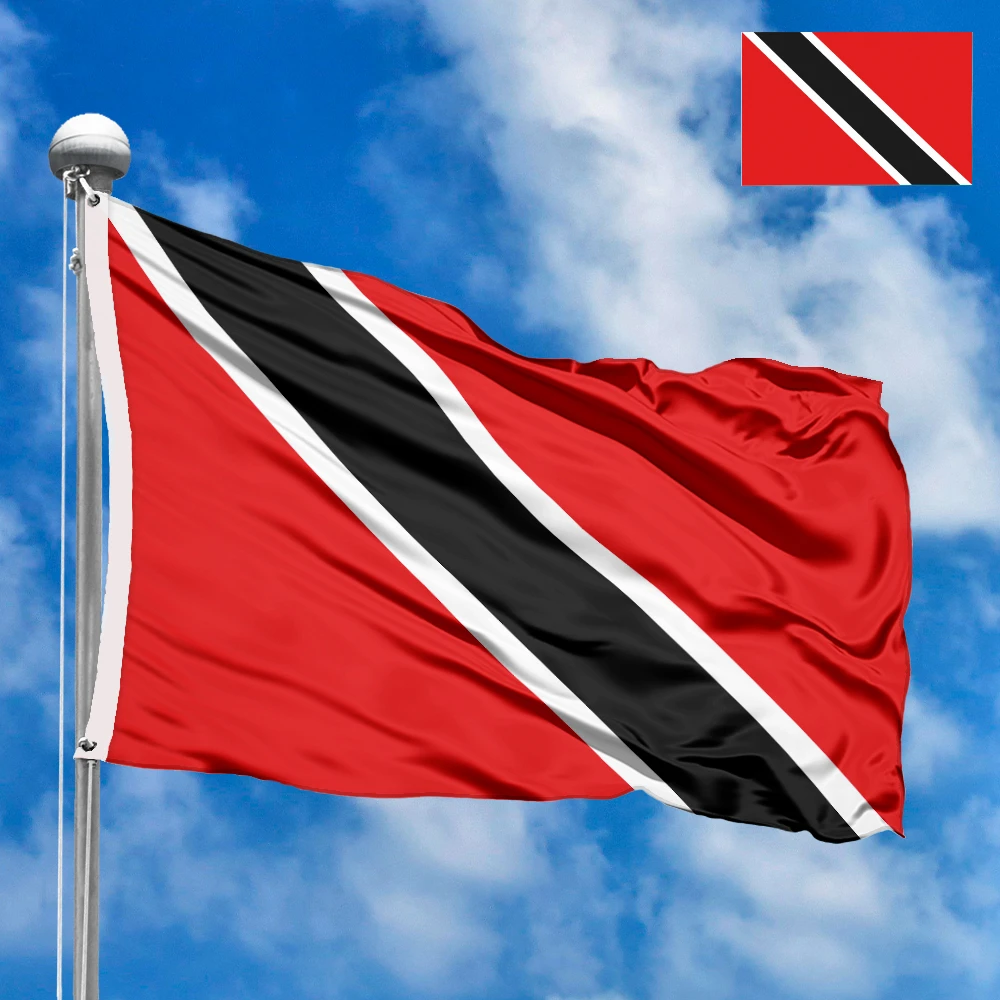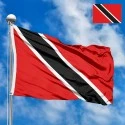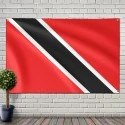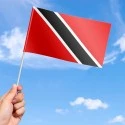The flag of Trinidad and Tobago is a meticulously designed emblem, rich with symbolism that reflects the country’s unique character, geography, and aspirations. Adopted on August 31, 1962, the very day the nation achieved its full independence from the United Kingdom, the flag's creation was a deliberate act of nation-building. It was the result of a nationwide competition, a process that engaged the citizens in the formation of their new identity. The final design, conceived by the renowned artist Carlisle Chang, was chosen for its simplicity, powerful aesthetic, and deep connection to the national ethos.
The flag features a red field, a central black diagonal stripe, and two thin white borders. The black stripe, or "bend dexter" in heraldry, runs from the top hoist corner to the bottom fly corner. The official dimensions are a ratio of 3:5, giving it a distinctive and balanced appearance. This design is not just a pattern of colors, but a narrative woven into fabric.
Expanded Symbolism of the Flag’s Elements:
-
Red: The dominant red of the flag is a potent symbol of life, energy, and the vitality of the land. It represents the perpetual warmth of the Caribbean sun, the courage and fortitude of the nation's people, and their unwavering friendliness. The red is also a nod to the fire of the sun, a vital element in the country’s tropical environment, and the sacrifices made for its freedom.
-
Black: The broad, diagonal black stripe is the core of the flag’s message. It represents the strength and unity of the people, a testament to their diverse origins and their commitment to forging a single, harmonious nation. This black stripe also symbolizes the richness of the soil, the bountiful natural resources of the islands, and the dedication of the people to the preservation of their heritage and their land. It's a color of determination, resilience, and the solid foundation upon which the nation is built.
-
White: The two delicate white stripes that border the black diagonal are perhaps the most poetic elements of the flag. They symbolize the sea, the ever-present and powerful force that not only separates but also unites the two islands of Trinidad and Tobago. The white represents the purity of national aspirations, the pursuit of peace and equality, and the cleanliness of the waves that lap upon the shores. Together, these stripes represent the two islands rising from the sea, bound by their shared history and future.
History and Significance for the People:
The adoption of the national flag in 1962 was a monumental moment in Trinidad and Tobago’s history. It marked a definitive break from colonial rule and the birth of a new sovereign state. Carlisle Chang's design was seen as a perfect blend of modern simplicity and deep-rooted meaning, avoiding any overt colonial symbols. The flag became an immediate and powerful symbol of national pride, unity, and a shared future.
For the people of Trinidad and Tobago, the flag is a constant reminder of their identity. It is flown with immense pride on Independence Day and Republic Day, but also on a daily basis by private citizens and businesses. The colors are seen as an embodiment of the nation's motto: "Together we aspire, together we achieve." The red, black, and white are not just colors; they are a visual representation of the people's collective journey, their resilience in the face of challenges, and their hope for a prosperous and harmonious future. The flag serves as a powerful unifying force, transcending ethnic and social differences and reinforcing the idea of one nation, one people.
In the demonstration images, full-size flags are shown with proportions of 2:3, and hand-held flags with proportions of 1:2.






 Waving flag
Waving flag
 Sizes:
Sizes:
 Round flag
Round flag
 Sizes:
Sizes:
 Rectangular flag 2:3
Rectangular flag 2:3
 Sizes:
Sizes: